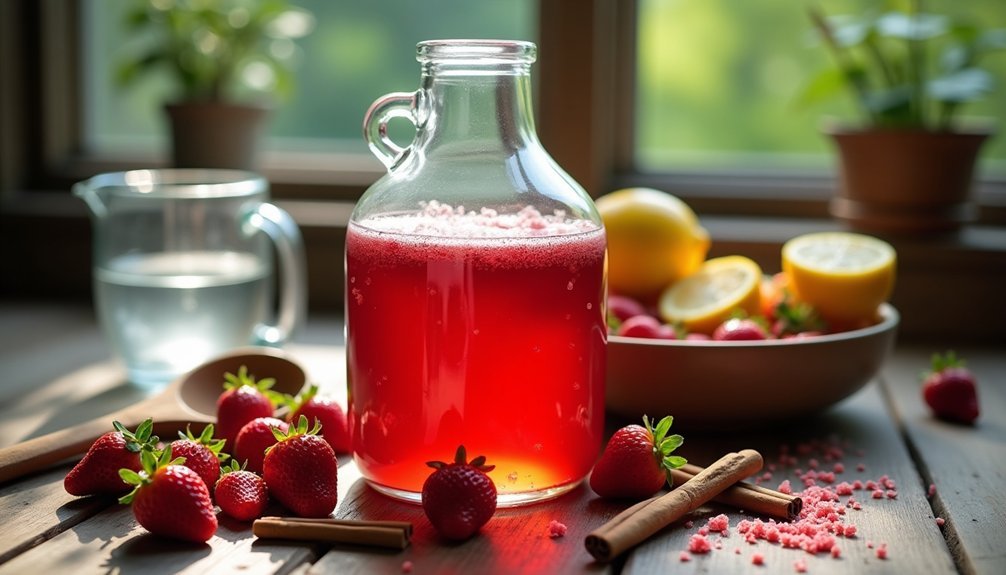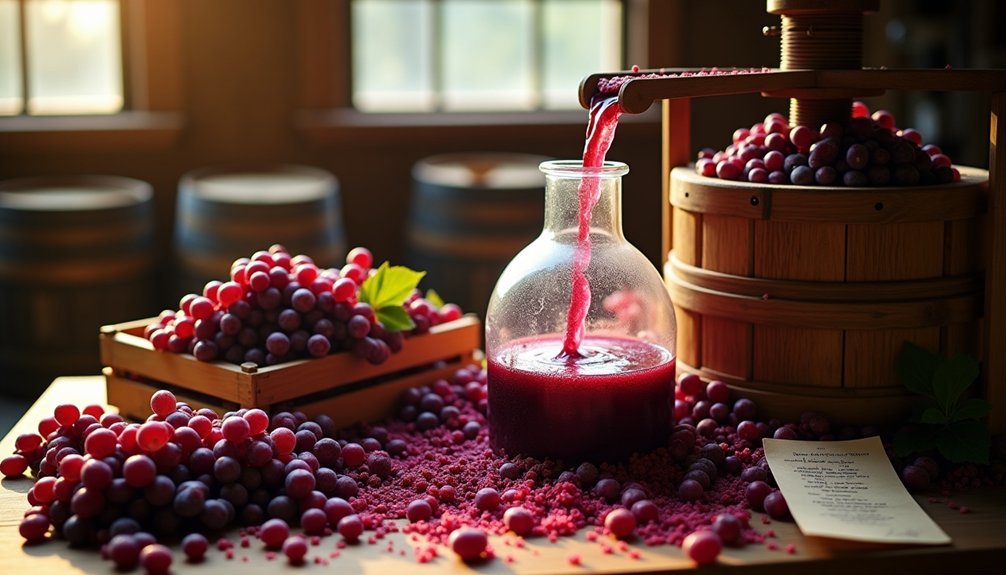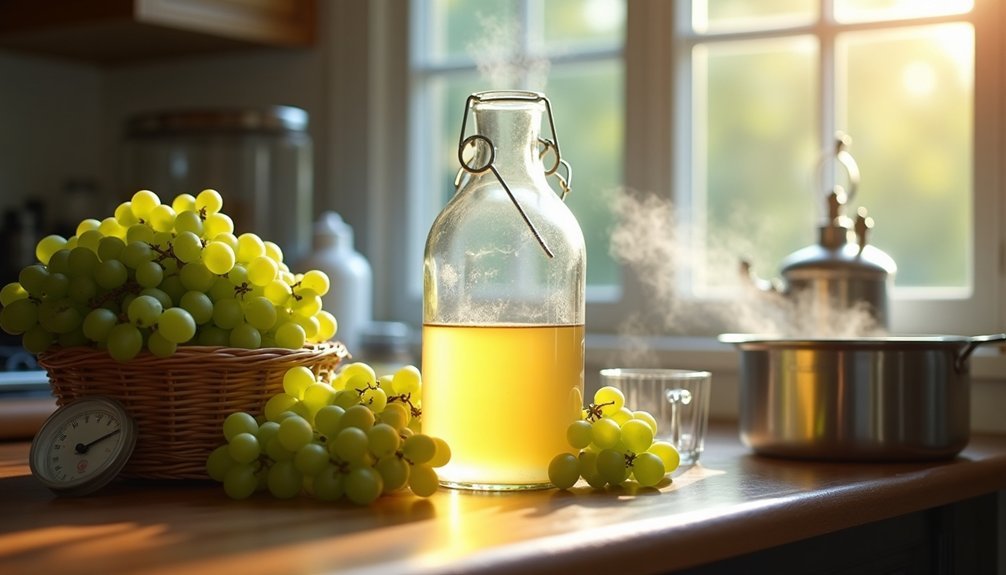I’ve discovered that creating strawberry wine from scratch transforms ordinary berries into something truly special. The process isn’t complicated, but it does require patience as nature works its magic. When friends taste my homemade strawberry wine, they’re often surprised by its bright flavor and delicate sweetness—qualities you won’t find in commercial versions. I’ll share my tried-and-true recipe that’s been perfected through years of small-batch winemaking. Wait until you see how those frozen strawberries transform in just a few weeks.
Why You’ll Love This Drink
Who doesn’t appreciate a glass of homemade strawberry wine on a warm evening? I’ve found this recipe creates a delightfully fruity wine that balances sweetness with just the right touch of acidity. Unlike commercial varieties, you’ll taste the pure essence of fresh strawberries in every sip.
I love that this recipe uses frozen berries, which are convenient and actually work better for wine-making since freezing breaks down cell walls. The process is straightforward enough for beginners but produces results that will impress even experienced home vintners.
The final product has a gorgeous ruby color and pairs wonderfully with desserts or cheese plates. It’s also perfectly enjoyable on its own. Plus, there’s something deeply satisfying about transforming simple strawberries into a sophisticated, sippable treat.
Ingredients
Just eight simple ingredients form the foundation of this delightful strawberry wine. You’ll need 4 pounds of frozen strawberries as your star ingredient—freezing actually helps break down cell walls, releasing more flavor and juice.
I combine these berries with 2.5 pounds of cane sugar to feed the fermentation process. To guarantee proper chemistry, I add a touch of acid blend (1/2 teaspoon) and wine tannin (1/2 teaspoon) which balance the sweetness and add structure.
The magic happens with a packet of wine yeast that transforms sugar into alcohol. I also recommend 1 teaspoon of pectic enzyme, though it’s optional—it helps break down fruit pectin for clearer wine. Finally, you’ll need enough non-chlorinated water to bring your total volume to 1.3 gallons.
Directions
Once you’ve assembled all ingredients, the winemaking process begins with preparing the strawberry must. I recommend thoroughly mashing the frozen strawberries to release their juices and flavors. Then combine this fruit mash with your sugar, pectic enzyme, acid blend, and tannin in your primary fermenter.
Add enough non-chlorinated water to reach a total volume of 1.3 gallons, then rehydrate your wine yeast according to package instructions before stirring it into the must. Seal your fermenter with an airlock to keep oxygen out while allowing carbon dioxide to escape.
For the next 1-2 weeks, keep your fermenter away from direct sunlight. I like to stir the must daily during the first week to guarantee proper extraction. Monitor fermentation progress and rack to a secondary fermenter once the initial vigorous fermentation subsides.
Substitutions and Variations
While following the basic recipe will yield delicious results, you might find yourself needing to adapt based on ingredient availability or personal taste preferences. I’ve experimented with several modifications that work beautifully.
You can substitute honey for sugar (use 2 pounds instead of 2.5) for a mead-like strawberry wine. Fresh berries work perfectly in place of frozen—you’ll just need to mash them thoroughly. If you lack pectic enzyme, simply accept that your wine may be slightly cloudy.
For flavor variations, try adding 1 cup of rhubarb for tartness, a vanilla bean for complexity, or even a handful of basil leaves for an herbal note. Lacking wine tannin? A strongly brewed black tea (1/4 cup) provides similar structure.
Additional Things to Serve With This Drink
Three perfect pairings can elevate your strawberry wine experience to new heights. I recommend serving this sweet, fruity wine with a cheese board featuring creamy brie, sharp white cheddar, and mild goat cheese. The contrasting flavors complement the wine’s natural strawberry notes beautifully.
For dessert pairings, try serving alongside dark chocolate truffles or a simple vanilla panna cotta. The chocolate’s bitterness or the cream’s subtle sweetness creates a delightful contrast with the wine’s fruity profile.
If you’re hosting a gathering, consider a charcuterie board with prosciutto and mild salami. The saltiness of cured meats balances the wine’s sweetness. I always keep my strawberry wine well-chilled at about 45°F for the best tasting experience.
Final Thoughts
After spending countless hours perfecting this strawberry wine recipe, I’m confident you’ll find it well worth the effort. The sweet-tart balance of fresh strawberries transforms into something magical during fermentation, creating a vibrant ruby-colored wine that’s perfect for special occasions or gift-giving.
Don’t be discouraged if your first batch isn’t perfect—winemaking is both science and art. Adjust sugar levels to your taste preferences next time, or experiment with different yeast strains for subtle flavor variations. The pectic enzyme is optional but helps extract more flavor and color while improving clarity.



